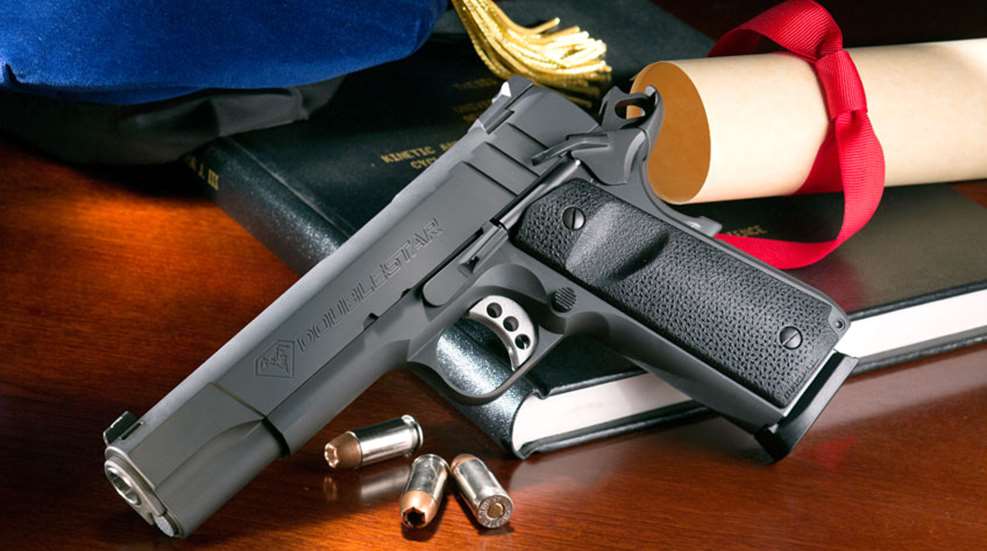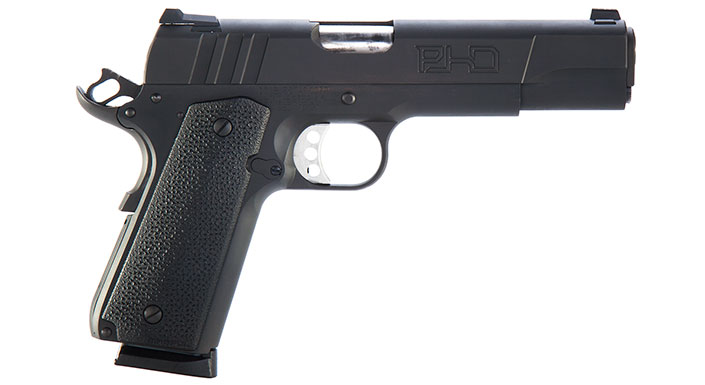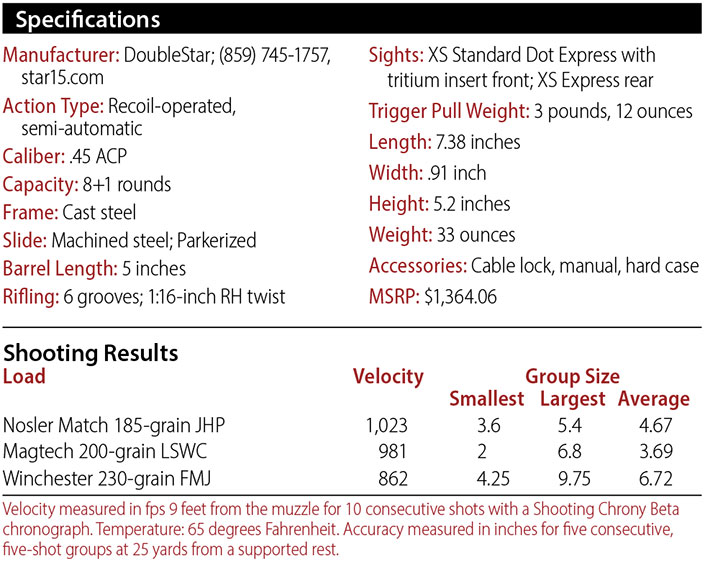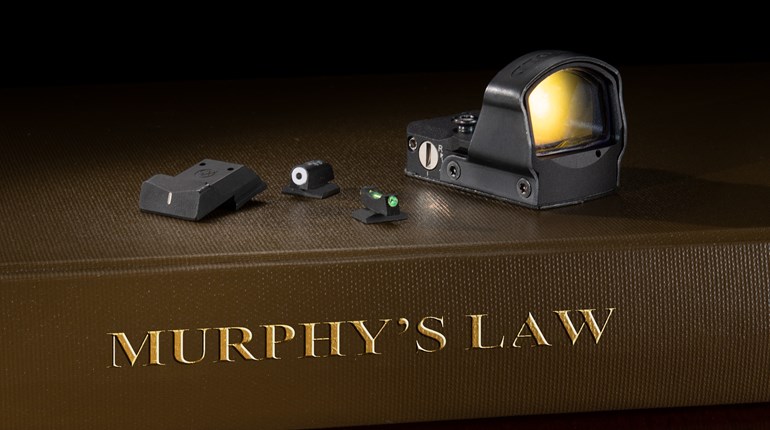
In the good ol’ days, back before social media, before the World Wide Web and even before disco and unleaded gasoline, the number “1911” used in reference to a pistol meant a USGI M1911 or M1911A1 or one of a handful of Colt’s commercial spinoffs. With a few notable exceptions, you generally knew the writer meant an all-steel, semi-automatic pistol with a single-action trigger and a barrel 5 inches in length.
These days, “1911” just means a kind of pistol, and it would frankly be hard to put a finger on what, if anything, is the unifying theme between a tiny 3-inch-barreled double-stack .40-caliber stainless gun with a “Light Double Action” trigger and, say, a 6-inch-barreled, all-steel single-stack chambered in .460 Rowland.
The 1911 market spans all kinds of prices, too, from budget imports that are as inexpensive as most of the polymer duty guns of today, to hand-fitted masterpieces with price tags of the sort I usually associate with used cars and not new guns.
There’s a particular market sweet spot in the price range that starts out around the same price as the “Custom Shop” or “Limited Edition” offerings from the big, mass-production makers and ends up near the price range of the entry-level guns from the established, semi-custom builders. In current dollars, this falls somewhere between the $1,000 and $2,000 margins, and it’s where you start getting a pretty decently hand-fitted gun largely devoid of the shortcuts that tend to go into trying to bring 1911s to market at competitive prices with reasonable profit margins.
See, the 1911 was designed in an era when pretty much the only material that could legitimately be referred to as “fiber-reinforced-resin-matrix composite” was wood. The only way to make a gun was to start with big chunks of steel and start machining away until you had a pile of metal shavings and a gun. These days, there are much easier ways to form metal, but if you want to adhere to the original design of the 1911, prepare to spend money, because making metal shavings is still a time-consuming and expensive way to build a pistol.
Within that aforementioned “sweet spot” are only a handful of manufacturers, and one of them is DoubleStar, located in Winchester, KY. Better known for its AR-pattern rifles, DoubleStar also makes the “C-series” of 1911 pistols in both the standard 5-inch and shorter, Commander-size 4.25-inch barrel lengths. The C-series guns represent excellent value for the money, filled with some of the best-quality parts from high-end vendors, but then “excellent value” can be a relative term when you’re talking about pistols with a $1,900-plus MSRP.
Wanting to see if the company could bring the quality of its C-series to shooters at a more reasonable price, DoubleStar set out to design a stripped-down, serious-business 1911 fighting pistol called the PhD 1911 pistol. I thought it was because this seemed like a smart idea for a pistol, but apparently it actually stands for “Personal Home Defense”.

The single biggest difference in construction between the C-series and the PhD is the latter has a cast frame.
Gasp! Shock!
Look, the 1911 was designed in an era before much of modern-design procedures were a thing. John Browning whittled away metal until his frame looked about right to his eyes, and it turns out the 1911 frame is so overbuilt, you can make it out of aluminum instead of steel without changing any of the dimensions and it will still last many tens of thousands of rounds. So, people who still blather on about a cast-steel 1911 frame being too weak are just not making a lot of sense.
DoubleStar receives the cast frames in an unfinished (often called “80-percent”) state and does all the finish-machining on them in-house. This gives the company complete control, ensuring all the pin holes are drilled in the correct locations, the feed ramp is properly cut and other small details—that make a world of difference in how the gun runs and are often overlooked—are all as they should be.
The frame has a nicely executed, high-hand cut at the juncture of the trigger guard and frontstrap and the magazine well features a slight bevel. The most interesting feature on the frame is at the heel, where the butt is gently rounded under. The “bobtail” look is all the rage in 1911s these days, but this is just a simple rounding of the corner that is pleasing to both the eye and hand. The mainspring housing is blended nicely at both the sides and the bottom, and features three broad vertical serrations for texturing, while the frontstrap features no texturing at all. You could send it out to get checkered and refinished yourself if you wanted, but skateboard tape is cheap at the hardware store.
The magazine release is of the “tactical” variety—it’s not a huge gamer button, but it’s still more protuberant than the GI model. This combines with the thumb cutout in the slim, textured Magpul grip panels to make for magazine changes that don’t require a bunch of gun-juggling unless you have unusually small paws.
The PhD has a long aluminum trigger with the de rigueur lightening holes and features an exceptionally well-fitted Wilson Combat high-ride beavertail safety. How well the beavertail is fitted tells me a lot about how much the pistolsmith cared about the gun, and whoever put this thing together cared a lot. There’s not a sharp edge or uneven gap to be found. Circumference around the trigger and backstrap, measured with a cloth tape, is 6.75 inches.

A forged-steel slide is hand-fitted to the frame, and the fit is a good one. The slide runs smoothly on the frame rails and displays only the faintest amount of play at lockup, more tactile than visible, and that was after sending a good 750 rounds downrange.
The slide is slightly flattened on top, again with three longitudinal serrations to cut down on glare. Sights are the XS Sights Standard Dot Express sights, which we will return to in a moment. The front end of the slide is narrowed with the popular “High Power cut,” which leaves a shelf that can serve as a gripping surface if you’re the sort of person who likes to manipulate the slide by grasping it up near the noisy end, which I am not.
Cocking serrations at the rear are three in number on each side and very broad and shallow. I understand every 1911 maker wants distinctive cocking serrations to differentiate their guns from the herd, but I don’t have to like it. That said, three cocking serrations per side does cut down on the number of machining steps without actually affecting performance of the gun, and every little bit helps control costs in this particular arena.
The barrel is from Storm Lake, the bushing is snug but not crazy-tight (a bushing wrench is probably a good idea, though), and the barrel featured only the smallest amount of play when a thumb was forcefully pressed against the chamber hood with the slide in battery.

The single most impressive thing about the gun, however, was that from the first time I pulled it out of its case at the range until I boxed it up to send back to headquarters, the gun did not experience a single malfunction with any type of ammunition. Jacketed hollow points, round-nose FMJ, lead semi-wadcutters—everything fed and functioned fine from both the eight-round ACT magazine that came with the gun, as well as my own in-house supply of Wilson Combat 47Ds. Feeding was smooth, ejection was consistent and the crisp, 3.75-pound trigger made shooting the gun a joy.
As for downsides, or rather downside, the biggest thing holding the gun’s performance back for me was the choice of the Standard Dot version of the XS Express sights. The Big Dot variety mimic the sights on dangerous-game “express” rifles by featuring a large, round front sight bead centered over a vertical line in a very shallow rear v-notch. It’s very quick at short range but imprecise as range increases. The Standard Dot is relatively more precise but sacrifices speed because it is inherently more difficult to center on the line of the rear sight without creating windage issues.
Accuracy-wise, the gun shot fine for me with one exception. It liked the Magtech 200-grain LSWC bullets; throw out the one group opened up by an egregious, called flyer and the average of the remaining four, five-shot groups was 2.9 inches. Nosler Match 185-grain JHP ammunition averaged a little larger than 4 inches, no doubt exacerbated by rather un-match-like variations in velocity from round to round.
The exception was some Winchester bulk-pack 230-grain FMJ, which surprised me by displaying abysmal accuracy from the gun, patterning rather than grouping at 25 yards.
All in all, I really liked the gun as a basic defense 1911 that was utterly reliable, a virtue that not all pistols of the type can claim. It has no frills, but no shortcuts, either, and with a change of sights (admittedly a personal thing) I’d carry it without hesitation. In fact, when I had a bespoke custom 1911 carry gun built to my own specifications some years back, I wound up with more or less the same gun as the PhD—including the same small parts—for about twice the money, making choosing the DoubleStar PhD a no-brainer.







































